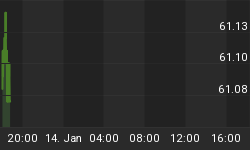 On March 23, 2009, China made public announcements to overhaul the global monetary system, thereby questioning the role of the US dollar as the reserve currency.¹ Chinese officials have gone on record saying they want to move the global currency peg away from the dollar in favour of currency diversification as indicated by China's push for OPEC to price oil in a basket of currencies (including the yuan) instead of dollars.
On March 23, 2009, China made public announcements to overhaul the global monetary system, thereby questioning the role of the US dollar as the reserve currency.¹ Chinese officials have gone on record saying they want to move the global currency peg away from the dollar in favour of currency diversification as indicated by China's push for OPEC to price oil in a basket of currencies (including the yuan) instead of dollars.
The use of the Chinese yuan in China's neighbouring countries for transactions has been growing in recent years. Today the yuan is informally freely convertible in almost all countries bordering China.
The push for the regionalization of yuan appears to be gathering steam ahead of the scheduled launch of the China-ASEAN Free Trade Area (CAFTA) on January 1, 2010. Under the terms of CAFTA, there will be zero-tariff for 90 percent of the products traded between China and ASEAN countries and "substantial opening" in the service trade market.
At nearly US$2.3 trillion, China holds the largest official foreign exchange reserves of any country and surpassed Japan as the largest foreign holder of U.S. debt in November 2008. Understandably, such a large exposure leaves China subject to currency fluctuations. China has been shifting their U.S. holdings to shorter term Treasuries and analysts believe China has been continuing a trend of diversifying into non-US dollar assets.
The economic model of export-led growth, of which China has been engaging, is essentially the practice of vendor financing to the United States. The concern is not that the United States will be unable to pay back the debt, for as long as this debt is denominated in US dollars, the United States will always be able to pay off the debt (since they can legally print as many dollars as required). The concern is what the purchasing power of these dollars will be when the debt is eventually repaid.
The cost of printing a $100 dollar with Benjamin Franklin's portrait is the same as that required for a $1 dollar bill with a profile of George Washington. The value for this extra paper note is derived by reducing the purchasing power of all US money in circulation and held in reserve. For single bills, the effect of devaluation is trivial; however, when large increases to the US money supply occur, the effect upon purchasing power becomes a disconcerting issue for holders of large amounts of US denominated assets such as US government bonds and treasury bills.
The widely accepted US dollar is usually used to settle trade accounts. Since July, China has allowed Hong Kong and five mainland cities to settle cross-border trade in yuan. Additionally, since December 2008, the People's Bank of China (PBOC) has signed six different official bilateral currency swap agreements worth 650 billion yuan in total.
| Currency Swap Agreement Partner | Date | Amount (Billion Yuan) |
| Bank of Korea | Dec 12, 2008 | 180 |
| Hong Kong Monetary Authority | Jan 20, 2009 | 200 |
| Central Bank of Malaysia | Feb 8, 2009 | 80 |
| National Bank of the Republic of Belarus | Feb 11, 2009 | 20 |
| Bank of Indonesia | Mar 23, 2009 | 100 |
| Central Bank of Argentina | Mar 29, 2009 | 70 |
| Total | 650 | |
Currency swap agreements are two-way loans between central banks. A central bank, through the exchange, injects the partner country's currency into its own financial system, allowing domestic businesses to borrow the other country's currency and use it to pay for imports of that country's goods.
This allows for bilateral trade to occur between the two countries without a requirement to convert everything into US dollars as firms importing goods from China can then pay for them with yuan borrowed from domestic banks. As the yuan is not a fully convertible currency it would be primarily used for this purpose.²
Other countries working towards directly exchanging their own currencies in trade transactions with China rather than using the US dollar as an intermediary include Russia, Brazil and Thailand. Recently, China has moved past the US as Brazil's top trading partner.
While the Chinese yuan does not currently have the liquidity to replace the US dollar as the global currency of choice for resolving international trade settlements, it must be acknowledged that China has made great strides in making that scenario more plausible than it was even a year ago.
Notes
1 "The acceptance of credit-based national currencies as major international reserve currencies, as is the case in the current system, is a rare special case in history ... The crisis again calls for creative reform of the existing international monetary system towards an international reserve currency with a stable value, rule-based issuance and manageable supply, so as to achieve the objective of safeguarding global economic and financial stability." (Essay titled "Reform the International Monetary System" by Dr Zhou Xiaochuan, Governor of the People's Bank of China dated March 23, 2009)
2 In some cases, such as the case for the Philippines, Mongolia and Belarus, yuan is being held as a reserve currency, albeit on a small-scale.
















